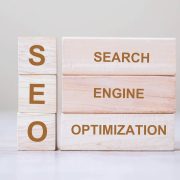Help Buyers Buy: Facilitate The Buy Path, Then Sell
Your solution is the last thing a buyer needs. Literally.
The sales model is a solution placement model. It does a fine job assessing needs, pitching, presenting, and placing solutions. Yet we close no more than 7% of prospects from first call, spend huge amounts of money creating presentations, sites, and marketing materials bring that in a fraction of the business they were designed to, spend inordinate amounts of resource responding to RFPs that fail, and attempting to make appointments with prospects who either reject us or don’t buy. We waste at least 90% of a sales professional’s time. As a result we hire more people and set our budgets accordingly.
We have great solutions. Our sales folks are professionals. What’s the problem?
The problem is that buyers don’t buy the way we sell. In fact, a purchase is the last step buyers take along their buy path, and we sit and wait for them to traverse their steps without having the proper skills to influence their journey from the start.
A Buying Decision is a Change Management Problem
To understand how buyers buy, we must understand systems and change. Buying anything, from a shirt to a company, a training program or a piece of software, is a change management activity. Something that has existed, and worked well-enough for a period of time, will be replaced by a relatively unknown entity. Change. And change is systemic: anything that touches the new element will be affected in an unknown way and potentially mess up the system. And systems won’t abide by disruption; we learned that in 6th grade chemistry.
Like all of us, buyers live in systems; everything within them chugs along together like a set of gears so the system remains stable. Stability – the status quo – gets maintained with rules and processes and job descriptions and relationships. Whatever doesn’t fit within the system gets chucked out because the system is sacrosanct. When there is a problem, the system creates workarounds so it can continue functioning; the problem then becomes part of the tapestry of the system. Only when there is no other option will the buyer face the potential disruption of bringing in something that is outside the system.
In order for buyers to buy and be willing to have something foreign enter their system, they need to first manage systemic change: they must get buy-in for the change, design new rules or roles, replace the old solution in a way that insures equilibrium is maintained, and last but not least, involve the managers, department heads, and sundry people who will touch the ultimate solution – folks not necessarily direct stakeholders or decision makers, but folks whose jobs will be effected by the change. Without managing this change, they will buy nothing, regardless of their need or the efficacy of your solution.
A buying decision is a systems problem. And sales acts as if the buyer’s problem were an isolated event.
Buying Includes a 13 Step Buy-in Change Process
There are unique change management issues that must be addressed before a purchase can occur. Indeed: until there is a clear path to change, there is no way to even know who is a prospect; before every appropriate voice is assembled and heard, there is no way to define a need. As outsiders focused on placing solutions, we have no ability to enter into the buyer’s environment and facilitate these activities because they are idiosyncratic and personal. And the time it takes them to figure out how to manage the backend change is the length of the sales cycle.
We’re currently entering at the end of the decision path: the very last thing a buyer needs is your solution. The last thing. But we can enter earlier. Here’s what we should be facilitating that is currently outside our purview and skill sets:
1. All – ALL – who will touch the new solution must have their voices heard. Usually it takes buyers a while to understand who must be included on the Buying Decision Team. In a small sale, it’s easier than a larger sale, but the process is the same.
It’s possible to facilitate our buyers in both assembling the full Buying Decision Team on the first or second call, and their discovery of the types of systems change they would need to address. They have to do this anyway: helping them speeds up the buying process and gets everyone at the table for an appointment.
2. Before a purchase, every element that would be disrupted needs to know how to compensate for change: tech folks must figure out their new scheduling or find outsourced support; sales and marketing must have a unified strategy to share budget; HR must get the right groups together, etc. It’s unique in each situation, although totally independent of need.
Sellers can use a facilitation model to navigate buyers through their change before they sell, so all areas that will be affected will know how to manage the change and be ready to buy. This speeds up the sales cycles and makes the seller a part of the Team.
9 out of the 13 steps in a buying decision involve systems change and include idiosyncratic, historic, and personal activities. Using only the sales model or marketing, a seller has no place at the table until it’s time to choose a solution. But we’re missing great opportunities to become real relationship managers and trusted advisors and suffering much longer sales cycles than necessary.
Use Buying Facilitation® with Sales
Selling and buying are two different activities. Change the way you are entering. Stop:
- pitching, presenting, or discussing solutions before buyers have defined their route to change;
- trying to get an appointment until the entire Buying Decision Team is assembled;
- assuming because you’ve spoken to one or two people there is a need;
- assuming that because there’s a need it’s a prospect;
- basing your sale on your solution;
- basing your sale on price (it has nothing to do with anything).
Instead, before selling:
- facilitate excellence and buy-in, from the first call with the gatekeeper;
- be a neutral navigator throughout the steps of change;
- help assemble the complete Buying Decision Team (even for a small sale) with you on it;
- recognize when a system cannot change and when it’s no longer a prospect (it’s got nothing to do with needing your solution).
Buyers don’t need you: they need to solve a business problem. And the business problem involves more of a solution than just your product. It’s time to help buyer’s buy.
About the Author

and Dirty Little Secrets: Why buyers can’t buy and sellers can’t sell and what you can do about it
.
Need help developing content, tools, training or questions that will enable a buyer’s buying decision process? A speaker at your next conference? Contact Sharon Drew at [email protected] or visit her website: www.buyingfacilitation.com.











Leave a Reply
Want to join the discussion?Feel free to contribute!